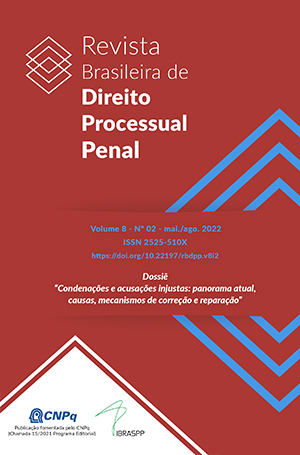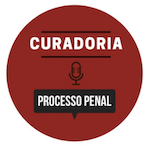Achieving Judgment by Means of Forensic Science During the Criminal Proceedings in Romania
DOI:
https://doi.org/10.22197/rbdpp.v8i2.672Keywords:
Criminal proceedings, Forensic science, Forensic examination, Function of judgement, Judicial decisionAbstract
Achieving the function of judgment by means of forensic science during the criminal proceedings in Romania has presented a real challenge for the judicial system during the years. This challenge must be integrated within the general framework of justice in criminal matters, based primarily on the traditional principles as well as the European ones, such as due process and solving penal cases in reasonable time. The current paper aims to analyze the function of judgment and its achievement through scientific techniques and methods provided by the forensic sciences. Another aim is to consider the penal procedure imperative which leads to ensuring a fair trial. The current paper is part of a research project conducted on the three functions of penal proceedings - accusation, defense and judgment - and their achievement by means of forensic science. The research results state that regarding the function of judgment, its achievement still creates difficulties for judges in their judicial activity of interpreting scientific evidence gathered and examined by the forensic experts. This aspect indicates that there is a lack of understanding the forensic evidence among judges. Despite this deficiency that exists in the judicial activity of solving penal cases and pronouncing decision based on the forensic evidence, it is useful for judges to take into account the forensic science investigation in an inter-professional approach provided by the forensic science. In this context, the forensic experts work in close cooperation with other practitioners, such as legal forensic scientists.Downloads
References
AALDERS, Maurice; LEAH, Wilk. Investigating the Age of Blood Traces: How Close Are We to Finding the Holy Grail of Forensic Science?. In FRANCESE, S. (ed). Emerging Technologies for the Analysis of Forensic Traces. Advanced Sciences and Technologies for Security Applications. Cham: Springer, 2019. https://doi.org/10.1007/978-3-030-20542-3_7
BANACH-GUTIERREZ, Joanna Beata; HARDING, Christopher. EU Criminal Law and Policy. Values, Principles and Methods. London: Routledge, 2016. https://doi.org/10.4324/9781315690605
BERKETA, John William; SIMS, Catherine; RAHMAT, Rabiah Al Adawiyah Binti. The utilization of small amounts of residual endodontic material for dental identification. Journal of Forensic Odonto-Stomatology, v. 37, n. 1, pp. 63-65, 2019. Available at: https://www.iofos.eu/Journals/JFOS%20May19/JFOS-37-1-63.pdf. Accessed on: July 13, 2022.
BERKETA, John William. Maximizing postmortem oral-facial data to assist identification following severe incineration. Forensic Science, Medicine, and Pathology, v. 10, n. 2, pp. 208-216, 2014. https://doi.org/10.1007/s12024-013-9497-4
BERKETA, John William; JAMES, Helen; LAKE, Anthony W. Forensic odontology involvement in disaster victim identification. Forensic Science, Medicine, and Pathology, v. 8, n. 2, pp. 148-156, 2012. https://doi.org/10.1007/s12024-011-9279-9
BLENKIN, Matthew R.B.; EVANS, Wendell. Age estimation from the teeth using a modified Demirjian System. Journal of Forensic Sciences, v. 55, n. 6, pp. 1504-1508, 2010. https://doi.org/10.1111/j.1556-4029.2010.01491.x
BOTNARU, Stela. Responsabilitatea redusa in pruncucidere: Implicatii juridico-penale. Studia Universitatis Moldaviae, v. 3, n. 73, pp. 138-141, 2014. Available at: http://dspace.usm.md:8080/xmlui/bitstream/handle/123456789/175/18.-p.138-141.pdf?sequence=1&isAllowed=y. Accessed on: July 12, 2022.
COBLE, Michael D.; BRIGHT, Jo-Anne. Probabilistic genotyping software: An overview. Forensic Science International: Genetics, v. 38, pp. 219-224, 2019. https://doi.org/10.1016/j.fsigen.2018.11.009
COMMUNITY-BASED SENTENCING ORDERS. Imprisonment and parole options. Final Report, Brisbane: Queensland Sentencing Advisory Council, 2019.
CRIADO-PEREZ, Christian; COLLINS, Catherine G.; JACKSON, Chris J.; OLDFIELD, Philip; POLLARD, Brett; SANDERS, Karin. Beyond an ‘informed opinion’: evidence-based practice in the built environment. Architectural Engineering and Design Management, v. 16, n. 1, pp. 23-40, 2020. https://doi.org/10.1080/17452007.2019.1617670
CRIMINAL DECISION no. 40/A/2022 of 28 February 2022 of the High Court of Cassation and Justice of Romania. Available at: http://www.scj.ro. Accessed on: July 4, 2022.
CRIMINAL DECISION no. 532/RC/2021 of 18 November 2021 of the High Court of Cassation and Justice of Romania. Available at: http://www.scj.ro. Accessed on: July 11, 2022.
CRIMINAL DECISION no. 160/A/2021 of 2 June 2021 of the High Court of Cassation and Justice of Romania. Available at: http://www.scj.ro. Accessed on: July 11, 2022.
CRIMINAL DECISION no. 143/A/2020 of 9 June 2020 of the High Court of Cassation and Justice of Romania. Available at: http://www.scj.ro. Accessed on: September 8, 2021.
CRIMINAL DECISION no. 112/A/2020 of 14 May 2020 of the High Court of Cassation and Justice of Romania. Available at: http://www.scj.ro. Accessed on: September 8, 2021.
CRIMINAL DECISION no. 312/A/2018 of 27 November 2018 of the High Court of Cassation and Justice of Romania. Available at: http://www.scj.ro. Accessed on: September 8, 2021.
CRIMINAL DECISION no. 835/2017 of the Court of Law of Craiova. Available at: http://portal.just.ro. Accessed on: July 11, 2022.
CRIMINAL DECISION no. 678 of 13 May 2015 of the High Court of Cassation and Justice of Romania. Available at: http://www.scj.ro. Accessed on: September 8, 2021.
CRIMINAL DECISION no. 837/R of 31 May 2012 of the Cluj Court of Law. Available at: https://legeaz.net/spete-penal-ca-cluj-2012/decizia-penala-837-2012-ca-cluj-qvb. Accessed on: June 25, 2022.
CRIMINAL DECISION no. 188/A of 24 October 2011 of the Cluj Court of Law, definitive pronounced by the High Court of Cassation and Justice - Penal Section, Criminal Decision no. 421 of 15 February 2012. Available at: https://www.curteadeapelcluj.ro/cacj_vechi/Jurisprudenta/sectia%20penala/Penal%20trim%20I%202012.pdf. Accessed on: July 23, 2022.
DE BOER, Hans H.; ROBERTS, Julie; DELABARDE, Tania; MUNDORFF, Amy Z.; BLAU, Soren. Disaster victim identification operations with fragmented, burnt, or commingled remains: experience-based recommendations. Forensic Science Research, n. 5, pp. 191-201, 2020. https://doi.org/10.1080/20961790.2020.1751385
DE KINDER, Jan; PIRÉE, Hugo. The future of the forensic science providers – Time to re-think our structures?. Forensic Science International, v. 316, November 2020. https://doi.org/10.1016/j.forsciint.2020.110471
DORAS, Simion. Clasificarea si caracteristica criminalistica a infractiunilor de omor ca puncte de repere privind directionarea activitatii de urmarire penala. Revista de Stiinte Penale, v. II, pp. 37-41, 2006.
EDGAR, Heather J.H. Dental morphological estimation of ancestry in forensic contexts. In: BERG, Gregory E., TA’ALA, Sabrina C. (eds.). Biological affinity in forensic identification of human skeletal remains. Boca Raton: CRC Press, Taylor&Francis Group, 2015.
EOGHAN, Casey. Digital Evidence and Computer Crime. Forensic science, Computers and the Internet, Third ed. Orlando, FL.: Academic Press, 2011.
EUROPEAN CONVENTION FOR THE PROTECTION OF HUMAN RIGHTS AND FUNDAMENTAL FREEDOMS, adopted on 4 November 1950, and entered into force on 3 September 1953. Available at: https://www.echr.coe.int/Pages/home.aspx?p=basictexts&c. Accessed on: June 22, 2022.
FINDLAY, Mark. Juror Comprehension and the Hard Case – Making Forensic Evidence Simpler. International Journal for Law, Crime and Justice, v. 36, n. 1, pp. 15-53, 2008. https://doi.org/10.1016/j.ijsl.2007.07.001
FORREST, Alexander Steward; WU, Henry Yuan-Heng. Endodontic imaging as an aid to forensic personal identification. Australian Endodontic Journal, v. 36, n. 2, pp. 87-94, 2010. https://doi.org/10.1111/j.1747-4477.2010.00242.x
GALANTE, Nicola; FRANCESCHETTI, Lorenzo; DEL SORDO, Sara; CASALI, Michelangelo Bruno; GENOVESE, Umberto. Explosion-related deaths: An overview on forensic evaluation. Forensic Science, Medicine and Pathology, v. 17, pp. 437-448, 2021. https://doi.org/10.1007/s12024-021-00383-z
GEHL, Rod; PLECAS, Darryl. Introduction to criminal investigation: Processes, practices and thinking. New Westminster, BC: Justice Institute of British Columbia, 2016.
GILSON, Cedric Charles. The Admissibility of Expert Evidence in Criminal Proceedings in England and Wales. Recapitulation and Review, n. 2, pp. 1-10, 2017. http://dx.doi.org/10.2139/ssrn.2955049
GRIFFIN, Amy; HENRRY, Julianne; KIRKBRIDE, K. Paul; PAINTER, Ben; LINACRE, Arian. A survey of the effects of common illicit drugs on forensic DNA analysis. Forensic Science International, v. 336, 2022.
HARVEY, Ian. Applying rules of evidence in administrative proceedings. Precedent, v. 150, 2019. Available at: https://search.informit.com.au/documentSummary;dn=240371034047366;res=IELHSS. Accessed on: July 23, 2022.
HECSER, Lazlo.; HADAREANU, Viorel. Expertiza medico-legala psihiatrica sau expertiza medico-legala psihiatrica și psihologica? Argumente teoretice si practice. Dreptul, n. 11, pp. 124-131, 1999.
HIGGINS, Denice; AUSTIN, Jeremy J. Teeth as a source of DNA for forensic identification of human remains: A Review. Science & Justice, v. 53, n. 4, pp. 433-441, 2013. https://doi.org/10.1016/j.scijus.2013.06.001
HILL, Anthony J.; LAIN, Russell; HEWSON, Ian. Preservation of dental evidence following exposure to high temperatures. Forensic Science International, v. 205, n. 1-3, pp. 40-43, 2011. https://doi.org/10.1016/j.forsciint.2010.08.011
HOUGH, Richard M. The investigation of homicide. Homicide Studies. An Interdisciplinary and International Journal, v. 23, n. 2, pp. 87-92, 2019. https://doi.org/10.1177/1088767919827348
IONESCU, Lucian; SANDU, Dumitru. Identificarea Criminalistica. Bucharest: Editura Stiintifica, 1990.
IRATZOQUI, Amaia; MCCUTCHEON, James. The influence of domestic violence in homicide cases. Homicide Studies, v. 22, n. 2, pp. 145-160, 2018. https://doi.org/10.1177/1088767917751673
KAIJA, Sandra; KUDEIKINA, Inga; GUTOROVA, Natalyia. Medical and procedural-legal aspects of impatient and outpatient forensic psychiatric examination. Wiadomosci Lekarskie, v. LXXIII, n. 7, pp. 1533-1538, 2020. https://doi.org/10.36740/wlek202007141
KAIJA, Sandra. Issues in separation of criminal procedural functions. Society. Health. Welfare, v. 40, pp. 1-10, 2018. https://doi.org/10.1051/shsconf/20184001010
LAUREIRO-MARTINEZ, Daniella; BRUSONI, Stefano. Cognitive frexibility and adaptive decision-making: evidence from a laboratory study of expert decision makers. Strategic Management Journal, v. 39, n. 4, pp. 1031-1058, 2018. https://doi.org/10.1002/smj.2774
LAW no. 135 of 2010 on the new Code of Criminal procedure, published in the Official Journal of Romania no. 486 of 15 July 2010, into force on 1 February 2014.
LETH, Peter Mygind. Homicide by drowning. Forensic Science, Medicine, and Pathology, n. 15, pp. 233-238, 2019. https://doi.org/10.1007/s12024-018-0065-9
LIEM, Marieke; KRUSSELMANN, Katharina; EISNER, Manuel. From murder to imprisonment: Mapping the flow of homicide cases - A systematic review. Homicide Studies, v. 24, n. 3, pp. 220-241, 2020. https://doi.org/10.1177/1088767920924447
LORENTE, Jose A.; SAIZ, Maria; HAARKÖTTER, Christian; ROBLES-FERNANDEZ, Inmaculada; ALVAREZ-CUBERO, Maria J.; GALVEZ, Xiomara; MARTINEZ-GONZALEZ, Luis J.; LORENTE-REMON, Begona; ALVAREZ, Juan C. Genetic identification against traffic in human beings. WIREs Forensic Science, v. 3, pp. 1-13, 2021. https://doi.org/10.1002/wfs2.1392
MAGHERESCU, Delia. Teoria generala a expertizelor criminalistice. Bucharest: Hamangiu, 2021.
MAGHERESCU, Delia. Achieving defense by means of forensic science during the criminal proceedings in Romania, Revista Brasileira de Direito Processual Penal, vol. 6, no. 1, pp. 117-146, 2020. https://doi.org/10.22197/rbdpp.v6i1.302
MAGHERESCU, Delia. The victims' rights on the forensic examination during the penal procedure in Romania. In: ANDRASKO, Jozef; HAMUĽAK, Jiraj; KAHOUNOVA, Michaela (eds.) Constitutional, Statutory and Criminological Attributes for Crime Victims. Bratislava: Univerzita Komenskeho v Bratislave, pp. 136-142, 2018. Available at: https://www.flaw.uniba.sk/fileadmin/praf/Veda/Konferencie_a_podujatia/bpf_2018_new/Zbornik_BPF2018_sekcia_1.pdf. Accessed on: July 24, 2022.
MOISA, Cristina. Probele in procesul penal. Practica judiciara adnotata. Bucharest: Hamangiu, 2017.
MURPHY, Erin. Forensic Evidence. In: LUNA, Erik. (ed.), Reforming Criminal Justice, Pretrial and Trial Processes, v. 3, Phoenix: Arizona State University, 2017.
PĂCURARIU, Ioana. Pentru îndeplinirea condițiilor de legalitate a administrării probelor, este necesar ca autopsia medico-legală să fie efectuată de un expert medico-legal official? Revista Universul Juridic, n. 11, pp. 50-55, 2018.
PIZZARO, Jesenia M.; TERRILL, William; LO FASO, Charles A. The impact of investigation strategies and tactics on homicide clearance. Homicide Studies. An Interdisciplinary and International Journal, v. 24, n. 1, pp. 13-22, 2020. https://doi.org/10.1177/1088767918816741
RECOMMENDATION. Council of Ministers to the Member States on the rules of the European Prison Rules, no. R(87)3, 1987. Available at: https://rm.coe.int/16804f856c. Accessed on: July 22, 2022.
RIJIKOVA, Svetlana. Impactul expertizei psihologice asupra activitatii sistemului judiciar. Revista de Stiinte Penale, v. I, pp. 144-150, 2005.
SESSION PRELIMINARY Decision of 03 April 2015 of the Court of Appeal of Bucharest.
SILVA, Rhonan Ferreira; FRANCO, Ademir; MENDES, Solon Diego Santos Carvalho; PICOLI, Fernando Fortes; NUNES, Fernando Gomes; ESTRELA, Carlos. Identifying murder victims with endodontic radiographs. Journal of Forensic Dental Sciences, v. 8, n. 3, pp. 167-170, 2016. https://doi.org/10.4103/0975-1475.195112
SINGH, Narendra Nath; GOWHAR, Owais; AIN, Tasneem S.; SULTAN, Saima. Exploring trends in forensic odontology. Journal of Clinical and Diagnostic Research, v. 8, n. 12, 2014. https://doi.org/10.7860/jcdr/2014/9976.5273
STOIAN, Maria Georgeta; GALAN, Elena. Relația microurmă/ întreg stabilită prin metode spectrometrice moderne și formularea concluziei expertizelor fizico-chimice criminalistice. Available at: http://old.mpublic.ro/jurisprudenta/publicatii/relatia_microurma_intreg.pdf. Accessed on: June 4, 2022.
TOCAN, Isabelle. Arestarea preventiva. In: UDROIU, Mihail (ed.), Codul de procedura penala. Comentariu pe articole, Third ed. Bucharest: C.H. Beck, 2020.
VALENZUELA, A.; MARTIN-DE LAS HERAS S.; MARQUES T.; EXPOSITO N.; BOHOYO, J.M. The application of dental methods of identification to human burn victims in a mass disaster. International Journal of Legal Medicine, v. 113, n. 4, pp. 236-239, 2000. https://doi.org/10.1007/s004149900099
VIDAICU, Mihaela. Expertiza judiciara. Indrumar pentru avocati. Sirius, 2015. Available at: https://www.bizlaw.md/wp-content/uploads/2017/02/Expertiza_juridiciara.pdf. Accessed on: June 3, 2022.
WHEATE, Rhonda Marie. Jury comprehension and use of forensic science. PhD Thesis: University of New South Wales, Australian Defence Force Academy, 2007. Available at: https://unsworks.unsw.edu.au/entities/publication/15558eb1-17d8-4621-9d9d-a4b7e383c9a2. Accessed on: July 22, 2022.
Downloads
Published
Issue
Section
License
Copyright (c) 2022 Delia Magherescu

This work is licensed under a Creative Commons Attribution 4.0 International License.
![]()
As of 2022, articles published in the RDPP are licensed under Creative Commons Atribuição 4.0 Internacional. rticles published until 2021 adopted the Creative Commons Atribuição-NãoComercial 4.0 Internacional.
















